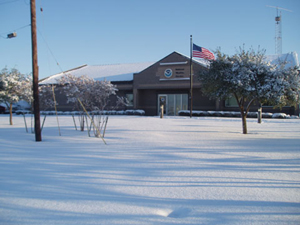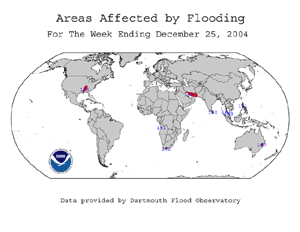|
 Global Analysis / Global Hazards / United States / U.S.
Drought / Extremes
Global Analysis / Global Hazards / United States / U.S.
Drought / Extremes
Use these links to access detailed analyses of Global and U.S. data.

 Drought & Heat | Flooding | Storms | Tropical Cyclones | Extratropical Cyclones | Severe Winter Weather
Drought & Heat | Flooding | Storms | Tropical Cyclones | Extratropical Cyclones | Severe Winter Weather


| Wet weather in areas of the western United States during October through December ameliorated drought conditions in parts of the region, with areas of the Southwest receiving some of the most beneficial precipitation. Extreme to exceptional drought persisted farther north throughout portions of the northern and central Rockies. |
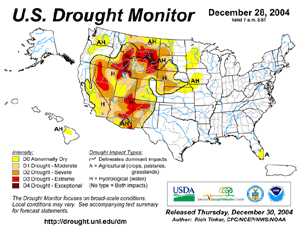
Larger Image
|
For comprehensive drought analysis, please see the current U.S. drought report.
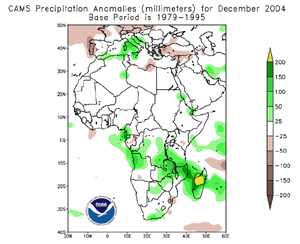 Larger Image Larger Image
|
Long-term drought continued across areas of the Greater Horn of Africa. Lake Victoria water levels were much below normal (a ten-year low), leading to problems downstream in the form of irrigation concerns and a lack of drinking water.
|


| In Sri Lanka, heavy monsoon rains produced flooding across northern and eastern parts of the country during early to mid-December. At least 6 people were killed by flooding, while 750,000 were rendered homeless (AFP/Reuters). The northeast monsoon season runs from December through January. |
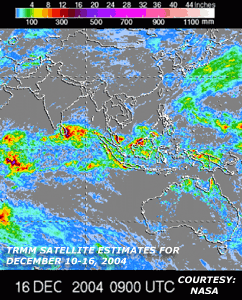 Larger Image Larger Image
|
In Iran, heavy rainfall in the southern province of Bushehr produced flooding that was blamed for the deaths of 17 people in traffic accidents (AFP).
For an archive of flood events worldwide, see the Dartmouth Flood Observatory.


No reports of severe storms were received during December 2004.


| Typhoon Nanmadol developed on November 28 in the western Pacific Ocean and reached typhoon intensity the next day. Nanmadol tracked over Luzon Island in the northern Philippines on December 2 with maximum sustained winds near 220 km/hr (120 knots or 140 mph), causing significant damage. Heavy rains, exacerbated by the cumulative rainfall from three prior tropical cyclones (including Typhoon Muifa), caused extensive flooding. Fatalities from the four tropical systems were blamed for almost 1,800 deaths since November 2004 (AFP/OCHA). |
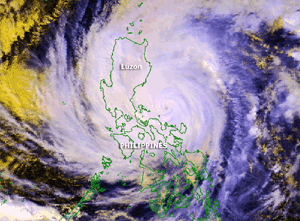 Larger Image Larger Image
|


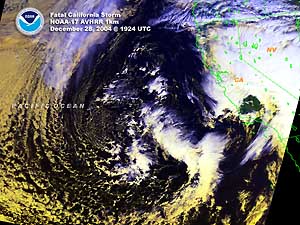 Larger Image Larger Image
|
A major storm system affected parts of the western United States during December 27-29, bringing a variety of weather conditions to the region. Heavy rainfall broke daily precipitation records at some locations in California, with Los Angeles (downtown) breaking a daily rainfall record for the month of December (141 mm/5.55 inches fell on the 28th). This was the third wettest calendar day in Los Angeles since records began in 1877. Very heavy snow fell across the Sierra Nevada Mountains, with some areas receiving several feet of accumulation. Winds with this weather system gusted over 105 km/hr (65 mph) at some coastal and mountain locations in California. |


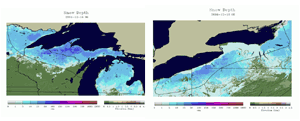 Larger Image Larger Image
|
In the United States, the first widespread, significant lake-effect snowfall event of the season occurred on December 14. Locally 10-25 (4-10 inches) cm of snow fell downwind of the Great Lakes. |
| Heavy accumulations of snow and ice blanketed areas of Kentucky, Ohio, Indiana and Michigan, breaking daily snowfall records in some locations. Accumulations exceeded 51cm (20 inches) in parts of Kentucky and Indiana. |
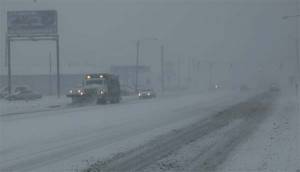 Snow Buries Paducah, KY On December 22 Snow Buries Paducah, KY On December 22
|
The same storm system dumped heavy accumulations of snow over much of Ontario in Canada on the 23rd, causing hundreds of flight delays at the Toronto Pearson International Airport on one of the busiest travel days of the year (Reuters).
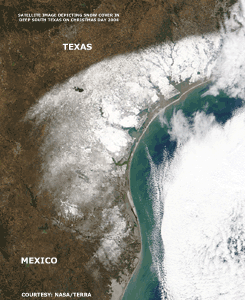 Larger Image Larger Image
|
Snow fell on Christmas Day in Deep South Texas. In Corpus Christi, snow totaled 11.2 cm (4.4 inches), and it was only the second White Christmas ever in Corpus Christi. Farther north in Victoria, 31.8 cm (12.5 inches) of snow fell, making it the first White Christmas on record for Victoria. |
| Snow fell across the coastal plain of North Carolina and into southeast Virginia on the 26th. Snowfall accumulations of 10-20 cm (4-8 inches) were reported in areas of North Carolina, with locally 30 cm (12 inches) in the Hampton Roads area of Virginia. |
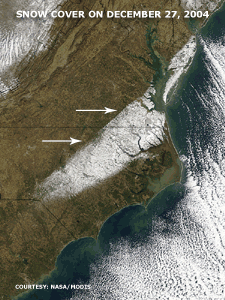 Larger Image Larger Image
|
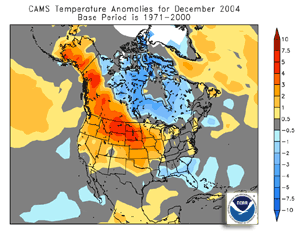 Larger Image Larger Image
|
Cold, Arctic air masses were prevalant across northern and central Canada during December, as monthly temperatures averaged 1-4°C (1.8-7.2°F) cooler than the long-term mean. |
In the United Arab Emirates, the first snowfall in the historical record fell across the al-Jiys mountain range on the 30th. Hundreds of automobile accidents were reported to police as a result of the unprecedented wintry driving conditions (AFP).
| A large of area of Siberia experienced much below average temperatures during December. Temperature anomalies during the month ranged from 3-5°C (5.4-9°F) below average. |
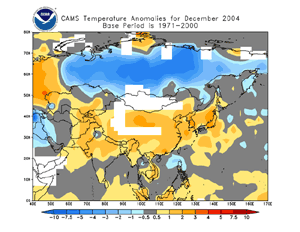 Larger Image Larger Image
|

References:
Basist, A., N.C. Grody, T.C. Peterson and C.N. Williams, 1998: Using the Special Sensor Microwave/Imager to Monitor Land Surface Temperatures, Wetness, and Snow Cover. Journal of Applied Meteorology, 37, 888-911.
Peterson, Thomas C. and Russell S. Vose, 1997: An overview of the Global Historical Climatology Network temperature data base. Bulletin of the American Meteorological Society, 78, 2837-2849.
For all climate questions other than questions concerning this report, please contact the National Climatic Data Center's Climate Services Division:
- Climate Services Division
NOAA/National Climatic Data Center
151 Patton Avenue, Room 120
Asheville, NC 28801-5001
fax: 828-271-4876
phone: 828-271-4800
email: ncdc.orders@noaa.gov
For more information, refer also to ...
Selected U.S. City and State Extremes
2004 Atlantic Hurricanes
2004 East Pacific Hurricanes
2004 U.S. Wildfire Summary
SSMI Derived Products
Global Historical Climatology Network (GHCN)
The Blended GHCN - SSM/I Product
The Global Temperature Anomalies
CLIMVIS - Global Summary of the Day
CAMS data provided by the Climate Prediction Center
Tropical Rainfall Measuring Mission (TRMM) - NASA
Geographic Reference Maps (pdf format)

For further information on the historical climate perspective presented in this report, contact:
- Scott Stephens
NOAA/National Climatic Data Center
151 Patton Avenue
Asheville, NC 28801-5001
fax: 828-271-4328
email: Scott.Stephens@noaa.gov

 NCDC / Climate
Monitoring / Climate
of 2004 / Hazards / Search / Help NCDC / Climate
Monitoring / Climate
of 2004 / Hazards / Search / Help
http://www.ncdc.noaa.gov/oa/climate/research/2004/dec/hazards.html
Downloaded Wednesday, 17-Sep-2008 07:13:27 EDT
Last Updated Tuesday, 29-Nov-2005 14:04:30 EST by Scott.Stephens@noaa.gov
Please see the NCDC Contact Page if you have questions or comments.
|


















 NCDC / Climate
Monitoring / Climate
of 2004 / Hazards / Search / Help
NCDC / Climate
Monitoring / Climate
of 2004 / Hazards / Search / Help
